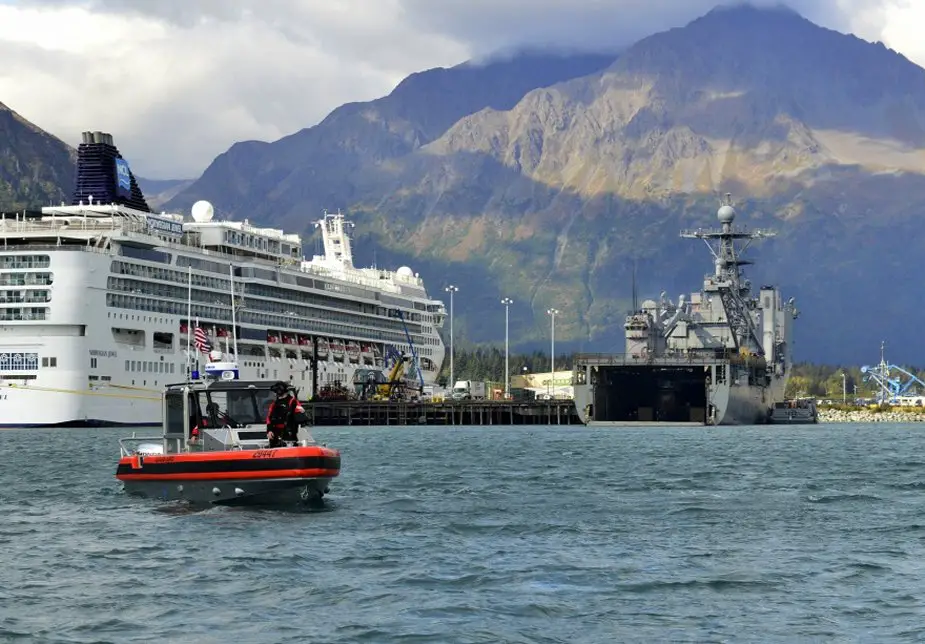Breaking news
U.S. Coast Guard training with Marines and Navy in Alaska exercise.
Coast Guardsmen from Alaska’s District 17, as well as Marines and sailors from California, are taking part in the largest training exercise of its kind in years. Approximately 3,000 Marines, sailors and Coast Guardsmen practised amphibious operations in Adak and Seward, as well as throughout Alaska’s coastal waters.
 USS Comstock (LSD 45) moors in Seward, Alaska, during the Arctic Expeditionary Capabilities Exercise (AECE) 2019 (Picture source: U.S. Coast Guard)
USS Comstock (LSD 45) moors in Seward, Alaska, during the Arctic Expeditionary Capabilities Exercise (AECE) 2019 (Picture source: U.S. Coast Guard)
A large part of the exercise was to practice operating in Alaska’s climate, rather than southern California, as they battled high winds, heavy seas and low temperatures. The purpose of the exercise was to see how the Navy and Marine Corps could improve their tactics, techniques and procedures to the unique difficulties of the Arctic climes.
The exercise has covered practising missions the Marines, Navy and Coast Guard might be called on to carry out including disaster relief, amphibious landings, logistical support ashore, and air assault — staging a mock attack with helicopters and Marines on an old airfield at Adak.
During the Arctic Expeditionary Capability Exercise, the Coast Guard is operating an MH-65 helicopter and HC-130 cargo aircraft from Coast Guard Air Station Kodiak. The Navy has two amphibious landing ships, USS Somerset and USS Comstock, according to a press release. The Marines sent Special Purpose Marine Air-Ground Task Force Alaska, drawn from the 1st Marine Expeditionary Force out of Camp Pendleton in California. Additionally, the USCGC Douglas Munro, homeported in Kodiak, is supporting the exercise.
Adm. Cedric Pringle, commander of Expeditionary Strike Group Three says he hopes the exercise will become a more permanent part of the rotation of major exercises for the military, perhaps scheduled every other year.
The Coast Guard has had continuous operations due to the nature of its primary mission, Riddle said. The experience they’ve acquired can help the Navy as the fleet reorients its mission in the Arctic. The Coast Guard has had a continuous presence here since 1867, when it was still known as the Revenue Cutter Service, according to Coast Guard Chief Petty Officer Matt Schofield.
The exercise will continue for another week.


























